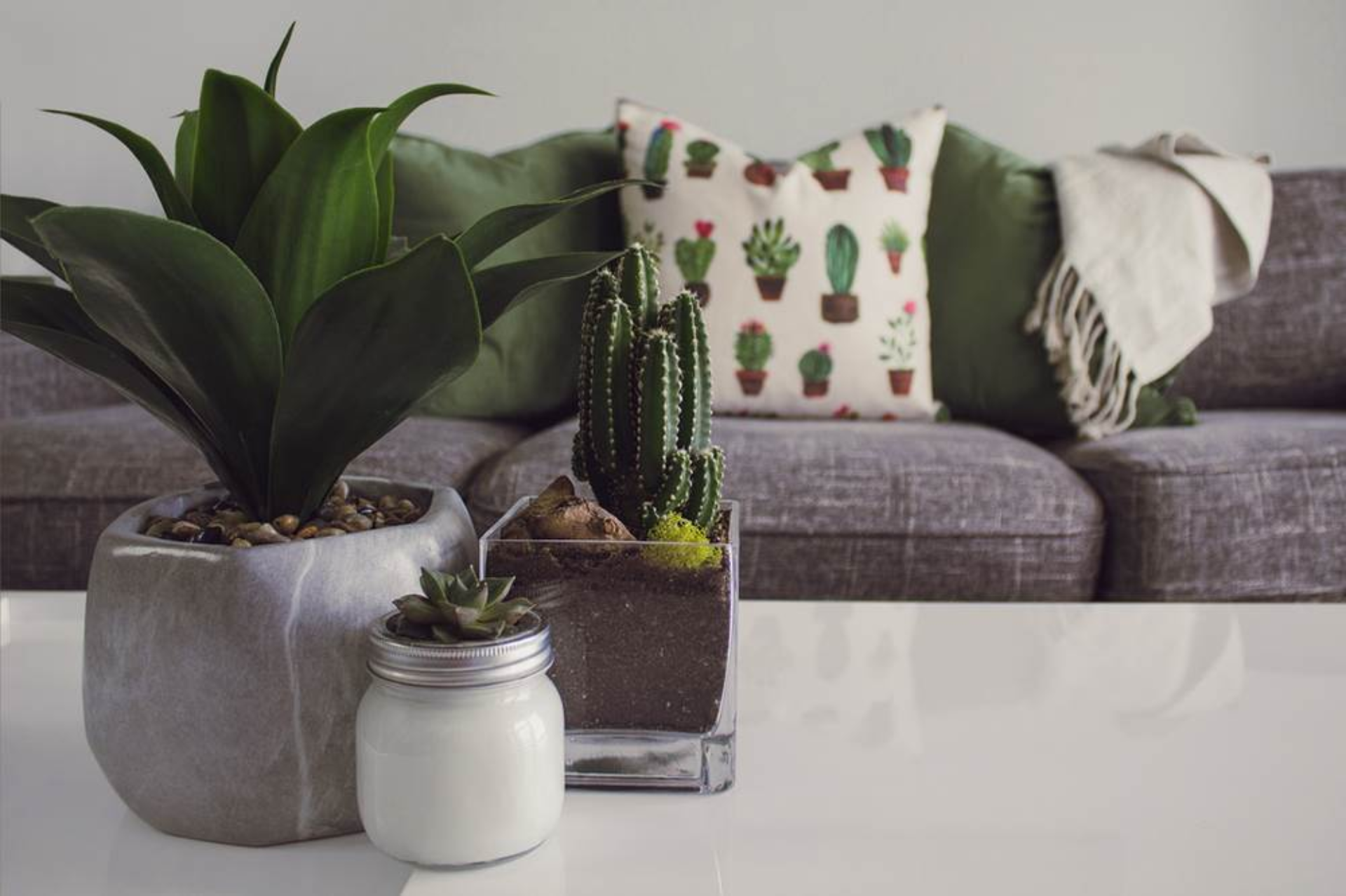 Your Guide to Indoor Plants
Your Guide to Indoor Plants
Would you like to have your mood boosted in a positive way? What about improved productivity, concentration and creativity? How about breathing and sleeping better? The answer is not as far out of reach as you may think. Plants have so many benefits that humans are not aware of; not only to the environment but also to ourselves.
How does it work? During photosynthesis, plants absorb carbon dioxide and release oxygen into the air. When plants are in a room, this makes breathing easier for the humans who inhabit the space. Plants can remove up to 87% of toxins from the air, purifying the space we breathe from substances like formaldehyde (present in cigarette smoke and some plastics).
The higher quality air does not go unnoticed by our brains. Studies have shown that students demonstrate 70% greater attentiveness when taught in classrooms containing plants. In addition, studies have also shown that adding plants to hospital rooms speeds recovery rates of surgical patients. In another medical study, patients in rooms with plants requested less pain medication than patients in rooms without plants.
If you're going to adventure into the realm of indoor plants, and most importantly, keep them alive, it's important to know which ones are best to buy. There are many plants that have multiple features. The following are both the easiest to keep alive, according to Lauren Conrad, and also are the best to purify the air in your home, according to A Pair and A Spare.

Aloe Vera
Aloe Vera is a succulent and does best in dry conditions, so be sure to use a pot with plenty of drainage. They do need proper, bright light and can help control the quality of the air by removing particles of formaldehyde, ammonia, xylene, and toluene. Wondering what these particles are and how they can adversely affect your health? The United States EPA (Environmental Protection Agency) is a great resource to search these terms and learn about how they are present in our environment, inside and out of your home.
English Ivy

Studies have proven that English Ivy improves symptoms of allergies or asthma and reduces mold in your home. This plant needs bright light, slightly drier soil, and excellent drainage. Ivy plants do best with regular fertilizing about once a month, except in the winter, which is the ivy’s dormant period. Gently washing the ivy leaves every so often with a sprayer in the shower or sink will remove dust and pests and provide humidity.

Spider Plant
The Spider plant is a pro at cleaning the air since it removes approximately 90% of formaldehyde from the air, absorbs odors, and sustains oxygen levels in a room. They like balanced soil, not too moist or dry, and indirect sunlight.
Snake Plant

Snake plants, also known as Mother-in-Law’s Tongue, are succulents and a great option for removing airborne toxins, like benzene, formaldehyde, TCE, xylene, and toluene. They are one of the easiest to take care of and very forgiving. Terra cotta pots with drainage holes work well and should be placed in bright but indirect light away from drafty windows. The long leaves should be wiped down with a damp cloth to remove dust every so often.
Pothos Plant

Another option is the Pothos plant and it is known for being the easiest houseplant to grow and purifies the air of the same chemicals as the Snake plant. It does not need a lot of sunlight, although it does prefer bright, indirect light. For this reason it can be excellent in offices and other low-light spaces. These plants can grow as long as 30 feet! If you've got a green thumb and your Pothos plant starts growing long enough, it can be secured to grow over hooks and windows.